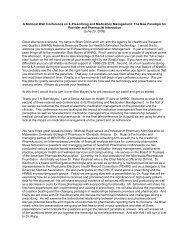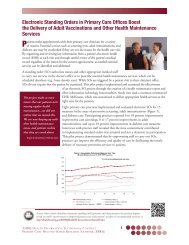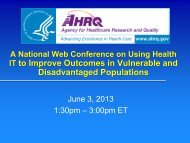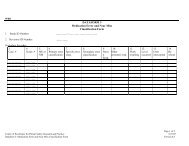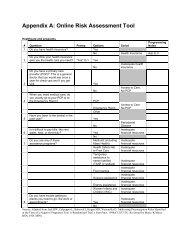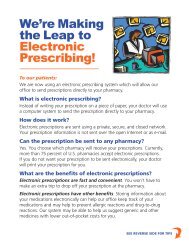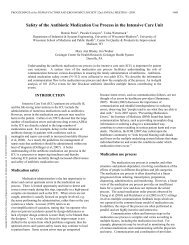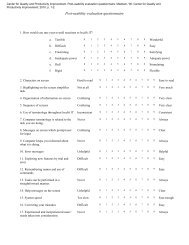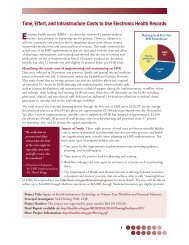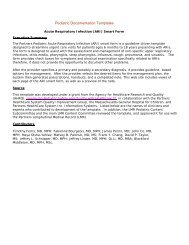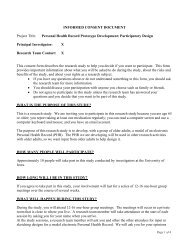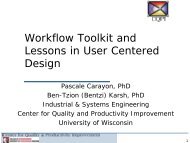CEO Survival Guide - AHRQ National Resource Center; Health ...
CEO Survival Guide - AHRQ National Resource Center; Health ...
CEO Survival Guide - AHRQ National Resource Center; Health ...
Create successful ePaper yourself
Turn your PDF publications into a flip-book with our unique Google optimized e-Paper software.
Efforts to Speed HIT AdoptionGreater investment in HIT today willlikely be critical to participating in, andbenefiting financially from, P4P programsin the future. As measure sets become morecomprehensive and include more granularmeasures of clinical quality, it will no longerbe feasible for healthcare organizations toderive the necessary data from administrativeor claims files or manual abstraction of samplesof medical records. <strong>Health</strong>care providersof all types will need EHRs. Those that doinvest in EHRs will find that having immediateaccess to more complete patient informationat the point of care, along with clinicaldecision-supports (i.e., prompts and alerts),will serve to improve the safety and effectivenessof the care they provide. More informationon P4P programs can be found in NQF’s<strong>CEO</strong> <strong>Survival</strong> <strong>Guide</strong> to Pay for Performance.Establishing an E-prescribingSystem for Medicare RecipientsAs noted earlier, e-prescribing is widelyviewed as a first step toward more comprehensiveEHR systems. In January 2006, avoluntary prescription drug benefit becameavailable for all Medicare recipients underthe Medicare Prescription Drug, Improvementand Modernization Act of 2003 (known asMedicare Part D). This legislation fosterse-prescribing by requiring that plans participatingin Part D support electronic prescriptionprograms (DHHS, 2005h). Plans are requiredto comply with a set of standards for interoperabilityin order to allow electronic transmissionof prescriptions from a physician to thepatient’s pharmacy of choice (DHHS, 2005i).In addition, CMS will be awarding $6 millionto fund pilot e-prescribing programs (DHHS,2005h).Building a <strong>National</strong> <strong>Health</strong>Information Network(i.e., interoperable EHR systems)Integral to building a national health informationnetwork is the specification of datastandards to assure interconnectivity andinteroperability of HIT. The federal governmenthas for some years been encouragingthe use of common data standards. TheConsolidated <strong>Health</strong> Informatics initiative,located within ONCHIT, has endorsed aportfolio of existing health informationinteroperability standards for use by federalagencies with health-related missions (DHHS,2005b). As the largest purchaser of healthcareservices, the federal government hasa good deal of leverage when it comes topromoting the use of common data standards.To further support a national network, in2005 the Secretary of DHHS established theAmerican <strong>Health</strong> Information Community(AHIC)—a 17-member commission made upof public- and private-sector representatives(DHHS, 2005d). The purpose of AHIC isto provide input and recommendations toDHHS on the development and adoptionof architecture, standards, a certificationprocess, and a method of governance forthe ongoing implementation of HIT andultimately the establishment of a <strong>National</strong><strong>Health</strong> Information Network (NHIN)(DHHS, 2005e).www.NQFExecutiveInstitute.org NQF Executive Institute 49



